Route of the Southwest Chief Los Angeles to Chicago.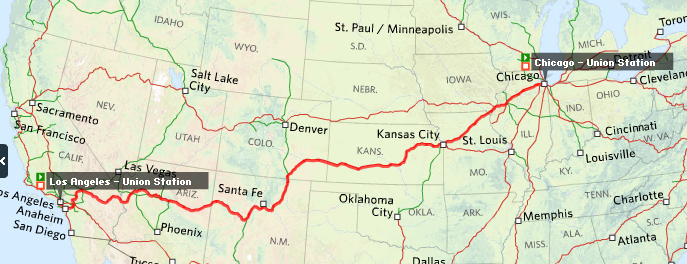 The best part
of reporting for TrainWeb.com, for me, is the journey to
the assignment and home, since it is usually by Amtrak.
As Ralph Waldo Emerson said, “Focus on the journey, not the destination. Joy is found not in finishing an activity but in doing it.” And if at the end of the journey there is a train-related activity on which I am to report, even better. Of course I have a wonderful home and family to return to after a rail journey, and, thanks to TrainWeb.com's Steve Grande, I usually have a future rail-related reporting job to do. I guess, if you are a rail enthusiast, you'd say I have a pretty good job! |
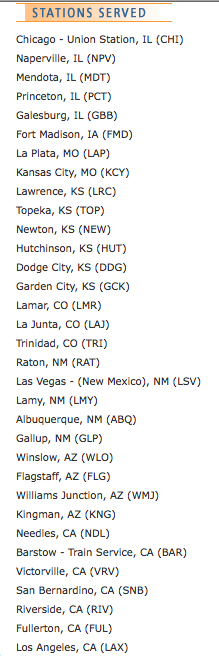 |
Superliner BedroomDetails and Amenities * Meals included * Designed for two passengers * Large picture window * Upper and lower berths * Armchair and sofa (converts to lower berth) * Private sink, vanity, private toilet and shower * Electrical outlets * Climate control * Individual reading lights * Garment rack * Fold-down table * Fresh towels and bed linens * Soap and shower amenities * Personal service (turn-down, coffee, paper, make-up bed) * Bottled water * Daily newspaper |
 Better than the drawing above, Amtrak's virtual 3-D tour of this room can be seen at: http://www.amtrak.com/trainTour/superlinerSLEEPER_CONTROLLER.html Just look at the upper level
bedroom.
|
Southwest Chief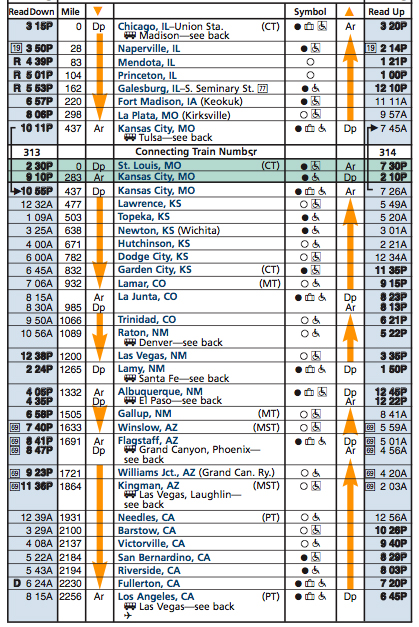 With sunrise about 6:30 and sunset about 7:30 in late April, you can see by the listed arrival times, what we'll be seeing in daylight on this trip. |
Southwest Chief 2009 Timetable (Left) We left Fullerton, CA, (bottom) on our way to Naperville, IL, (reading up the times in the right column) Our return was from Naperville, IL, (near the top), reading down the left column's times to Fullerton. ----------------------------------------------- 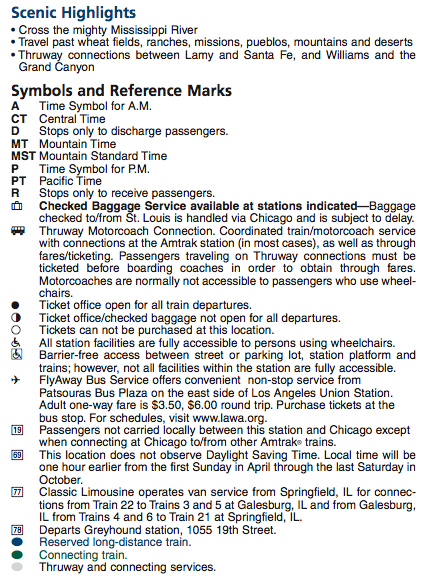 |
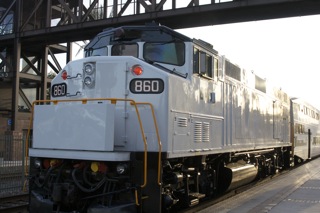 Newly painted Metrolink 860 without "Metrolink" |
 |
 |
 At Fullerton
Station, some cars are being stored and refurbished, including the
Silver Splendor.
|
 |
 |
 |
 A new Metrolink Locomotive pulled the next train through. |
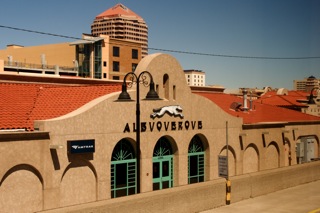 |
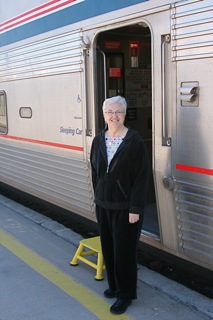 |
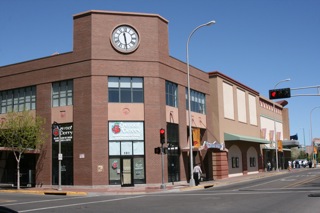 |
 |
 |
 |
 |
  |
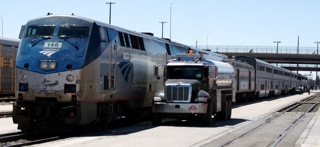 Gassing up in Albuquerque. |
 |
 Typical
consist: baggage car, transition sleeper for the crew, two
sleepers, diner, sightseer/lounge, and two coaches.
|
 |
 |
 |
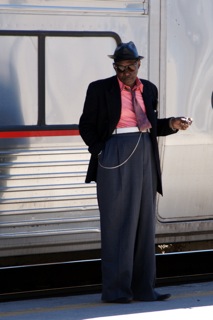 Some interesting folks ride the train. |
 |
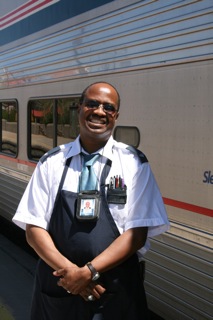 Joe, our car attendant. |
 "S" Curve above Lamy, NM |
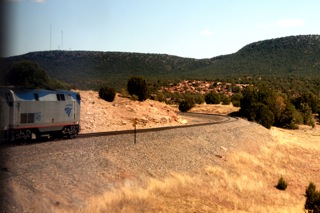 |
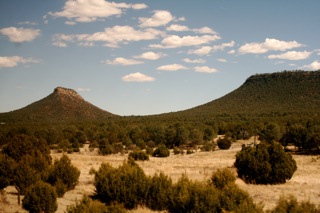 Starvation Peak |
 |
 |
 |
 The Harvey
House still stands beside the Las Vegas, NM, Station.
|
 |
 |
 |
 "Where the Centerline Ends" |
 |
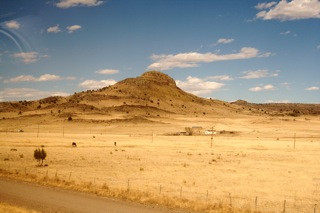 Wagon Mound |
 |
 |
 A long line of
telephone poles were along the track and each had one or more hawk
nests.
|
 |
 Looks like a relic from Dodge City. |
 Big Sky Country |
 |
 I spotted Bob's
'work truck' at the depot for his full-time job: DJ and
Photography Services
http://www.shownoffphotodj.com/ |
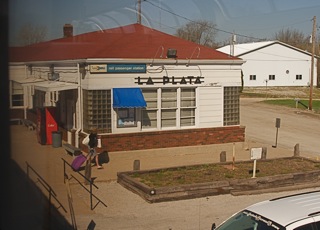 |
 |
 Across the street in La Plata is TrainParty.com. |
 A few yards
farther, on the former Wabash RR bridge over the BNSF tracks, is the
Chris Guenzler Overlook built by the nearby Depot Inn & Suites so
guests can watch passing trains. It is now enclosed with Internet
and
train tracking electronics.
|
 Check out the
web address for more information about the overlook.
|
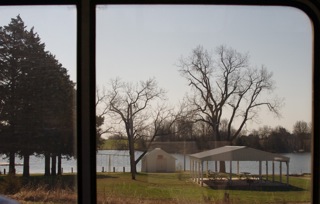 The last
landmark in La Plata you can see from the train is Santa Fe Lake,
originally used to water steam locomotives on the Wabash and Santa Fe
RR.
|
 Rare Santa Fe
cabooses along the tracks, at Ft. Madison, IA.
|
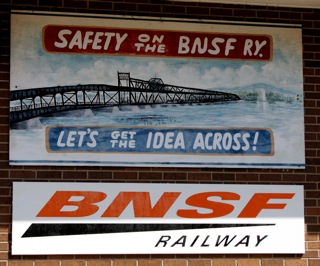 |
 |
 |
 |
 Not far east of Ft. Madison, IA, we cross this bridge to Illinois. |
 Catfish Bend Casino sits at the edge of the Mississippi. |
 Ft. Madison reconstructed at River's edge. |

 A large
historic steam locomotive sits along the river as well.
|
 Ft. Madison is
known for this auto/train bridge over the Mississippi.
|
 |
 |